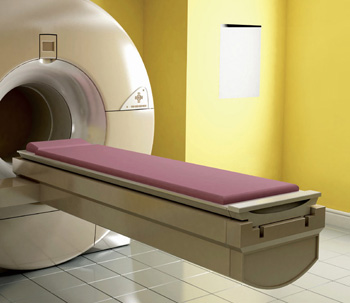Hospital Cabling Infrastructure Supports Sustainability
 As a large consumer of energy resources, health care facilities face significant operating costs and are threatened by rising and volatile energy prices. With a strong emphasis on sustainability and efficient resource use, health care facilities can be designed and constructed to be significantly more cost effective than a traditional building.
As a large consumer of energy resources, health care facilities face significant operating costs and are threatened by rising and volatile energy prices. With a strong emphasis on sustainability and efficient resource use, health care facilities can be designed and constructed to be significantly more cost effective than a traditional building.
Lighting controls such as digital lighting systems, dimmers and sensors reduce lighting usage and significantly lower operating costs. Even more savings stem from reduced air conditioning costs, bulb replacement, maintenance expense and the cost of power during peak hours. Building managers can program lighting from a central location using digital lighting management, an intelligent, distributed control system that automatically maximizes lighting energy efficiency that is both sustainable and cost effective.
Plug load control or managing the amount of energy drawn by devices from an electrical outlet, is an emerging challenge for health care facility managers. As HVAC and lighting are made more efficient, the energy used by devices, equipment, computers, monitors and personal electronics like tablet computers becomes a larger share of total electricity usage. There are a number of options for controlling plug load by turning off equipment. These include:
• Automated switching using timers and “smart” power strips to power off non-critical equipment and office equipment.
• Central power management systems that use software to perform specific tasks, such as enabling sleep settings on all computers on the network.
• Total control systems that provide fully integrated management controls.
Data center energy control includes passive air control, the most efficient, cost-effective method of improving airflow and maintaining proper temperature to lower energy costs for cooling. Cable management and advanced racking solutions help facilitate cooling efficiency and reduce network downtime. Wire mesh cable tray allows for overhead or under floor cable routing and enables better airflow than solid conduit. Advanced cable management racks are designed for higher density applications where they manage intake and exhaust air, creating cold aisle/hot aisle air distribution from side, bottom, and back vented equipment. Efficient cable management also contributes to better space utilization.
During new construction or renovation, health care facility owners and managers face a combination of economic pressures and compressed schedules that can increase the costs of installation and retrofits. The careful selection of electrical infrastructure products has the potential to greatly benefit the entire project timeline. Systems with “designed-in” productivity include prewired raceway, modular wiring systems, wire mesh cable tray with pre-assembled supports, plug-and-play wiring devices, and pre-fabricated wiring systems.
The use of products and systems that have “designed in” productivity offer numerous benefits throughout the life of a building project. Products and integrated systems offer time savings in the design, assembly and installation of the electrical and cabling infrastructure. Installation is simpler, so there are fewer errors and delays due to re-work. After initial construction, their “plug and play” capabilities make it easy to accommodate moves, adds and changes.
In today’s highly competitive health care environment, better care involves more than supporting patients and caregivers. It’s about making sure even older facilities operate in a more sustainable manner while being easier and more cost-effective to maintain. The infrastructure of health care facilities is more important than ever. The building’s backbone — the wiring and cabling pathways, lighting and lighting controls, and data, audio-video and communications systems of a building — must not only accommodate the demands of today, but also be able to adapt to the changes of tomorrow. And this infrastructure is the enabling technology for advanced health care facilities, whether dedicated to patient care or research. Without it, a building cannot perform at a high level and be sustainable, cost-effective, safe, secure, productive and functional.
